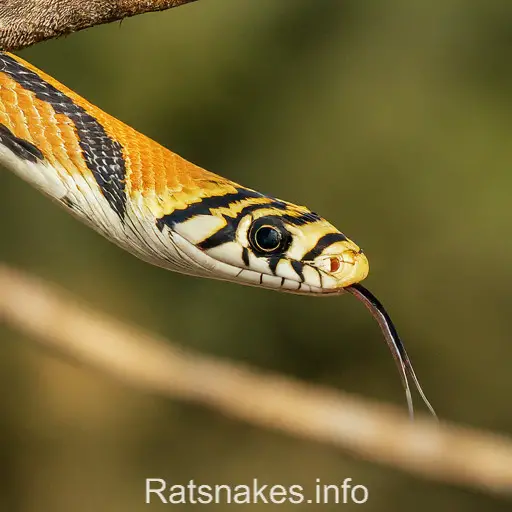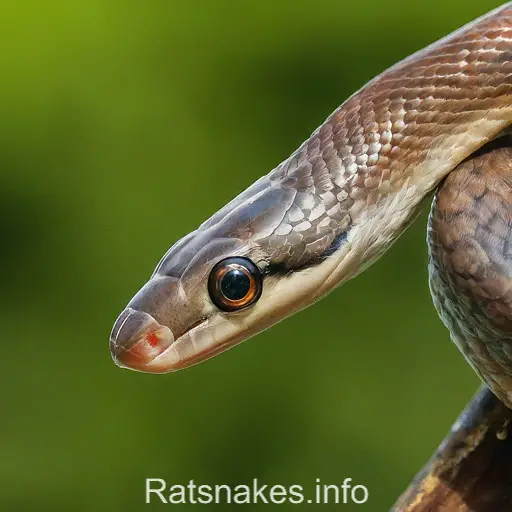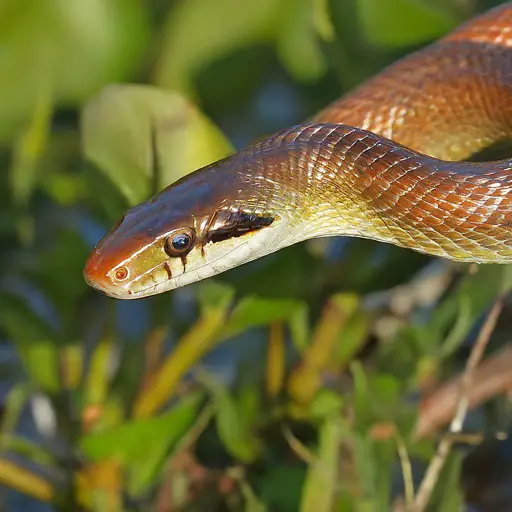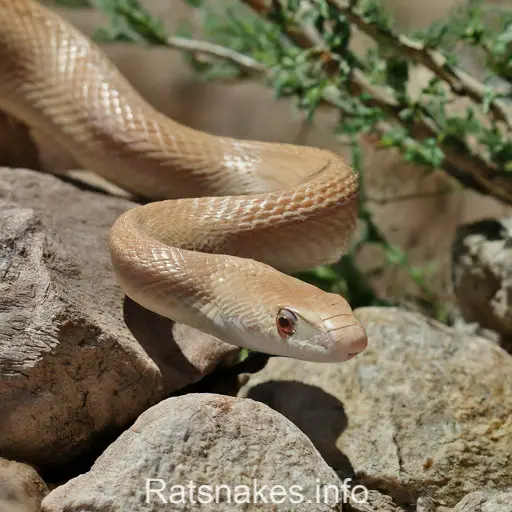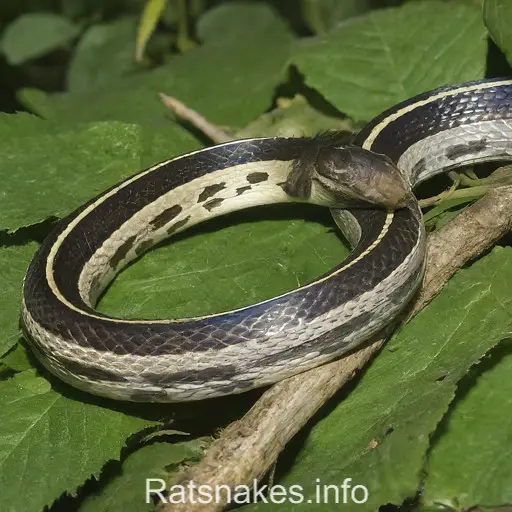
Are you curious about the Eastern rat snake? These fascinating reptiles are native to the eastern United States and are known for their impressive climbing abilities. We’ll delve into their appearance, behavior, habitat, and much more in this article.
With their sleek bodies and distinct patterns, Eastern rat snakes are often mistaken for other snake species. However, their unique characteristics set them apart. Join us as we explore the distinctive features that make these snakes a vital part of their ecosystem.
From their diet to their reproduction habits, Eastern rat snakes have a lot to offer in terms of understanding the natural world around us. Let’s unravel the mysteries of these remarkable creatures together.
Appearance of Eastern Rat Snakes
When it comes to Eastern rat snakes, their appearance is quite distinctive. They are large, slender reptiles with keeled scales that give their bodies a rough texture. Eastern rat snakes generally measure between 3 to 6 feet in length, sometimes reaching up to 8 feet. Their coloration varies, ranging from yellowish-brown to gray with dark blotches down their backs. These snakes have round pupils, unlike venomous snakes with elliptical pupils. Additionally, their undersides are typically white or cream-colored.
One notable feature of Eastern rat snakes is their ability to flatten their bodies when feeling threatened, making them appear larger than they actually are. This behavior is a defense mechanism meant to intimidate potential predators. Despite their somewhat intimidating appearance, Eastern rat snakes are non-venomous and play a crucial role in maintaining the balance of their ecosystems.
In terms of pattern, Eastern rat snakes exhibit different color variations across their range, adapting to various environments. Their scales may sometimes have a slightly iridescent sheen, adding to their overall captivating look. These snakes are truly remarkable creatures in both their appearance and behaviors, reflecting their adaptability and resilience in the wild.
Behavior of Eastern Rat Snakes
Eastern rat snakes are primarily diurnal, meaning they are most active during the day. They are skilled climbers and can often be found in trees hunting for prey. These snakes are opportunistic feeders that consume a variety of small animals, including rodents, birds, and even bird eggs.
One fascinating behavior of Eastern rat snakes is their ability to mimic the behavior of venomous snakes when threatened. They may vibrate their tails, flatten their bodies, and even strike if they feel cornered. It’s important to note that despite these displays, Eastern rat snakes are non-venomous.
During the breeding season, Eastern rat snakes engage in courtship behaviors that can involve male combat. Mating typically occurs in the spring, and females may lay a clutch of 6-20 eggs in the summer. These eggs are often deposited in rotting logs or other hidden locations where they are left to hatch.
Eastern rat snakes are solitary animals for most of the year but may gather in groups known as hibernacula during the winter months. These communal dens provide protection and help the snakes conserve energy during the colder months.
Overall, the behavior of Eastern rat snakes is a testament to their adaptability and survival instincts in various habitats. Their diverse diet, defensive strategies, and social behaviors all play a role in their success as a species in the wild.
Habitat of Eastern Rat Snakes
When it comes to the habitat of Eastern rat snakes, they are versatile creatures that can thrive in a variety of environments. These snakes are commonly found in forests, woodlands, fields, and rocky areas across a large part of the Eastern United States. They are known to inhabit regions ranging from New England all the way down to Florida and as far west as Texas.
One of the key reasons for their success in these diverse habitats is their ability to adapt to different conditions. Eastern rat snakes are frequently spotted in tree canopies, where they exhibit their excellent climbing skills. They are equally comfortable on the ground, often seeking refuge in rock crevices or underground burrows. These snakes are territorial and may establish their home range in a particular area with access to a food source and suitable shelter.
Wooded areas with plenty of vegetation and rodent populations are particularly attractive to Eastern rat snakes, as they provide ample opportunities for hunting and nesting. In addition, these snakes are known to take advantage of human-made structures such as barns, outbuildings, and even urban areas where rodents are abundant.
Understanding the habitat preferences of Eastern rat snakes is crucial for conservation efforts and wildlife management to ensure these fascinating creatures continue to play their vital role in ecosystems across their range.
Diet of Eastern Rat Snakes
Eastern rat snakes have a diverse diet that primarily consists of small mammals, birds, bird eggs, and amphibians. They are constrictors, capturing their prey and suffocating them before consuming. These snakes are opportunistic feeders, preying on whatever is readily available in their environment.
- Rats and mice are common prey for Eastern rat snakes, making human settlements and agricultural areas ideal feeding grounds.
- They also consume birds and their eggs, which they may access by climbing trees or raiding nests.
- Eastern rat snakes play a crucial role in controlling rodent populations, helping to maintain the balance of ecosystems.
In some cases, Eastern rat snakes have been known to consume other snakes, including smaller snake species. This cannibalistic behavior is a survival strategy for competition over resources and territory. Their adaptability in diet reflects their generalist foraging behavior, making them successful predators in a variety of habitats.
Reproduction Habits of Eastern Rat Snakes
When it comes to reproduction, Eastern rat snakes are known for their fascinating habits. They are oviparous, meaning they lay eggs instead of giving birth to live young. Mating season for these snakes typically occurs in the spring, with females laying their eggs in early summer.
Female Eastern rat snakes can lay anywhere between 4 to 20 eggs in a clutch. These eggs are usually deposited in hidden, warm locations such as rotting logs or compost piles to provide the necessary heat for incubation. The incubation period for these eggs can range from 4 to 6 weeks.
Once the eggs hatch, juvenile rat snakes emerge. They are independent from birth and must fend for themselves. Juveniles often have a distinct pattern and coloration compared to adults, helping them camouflage in their surroundings. As they grow, they will shed their skin several times to accommodate their increasing size.
Sexual maturity in Eastern rat snakes is usually reached at around 2 to 4 years of age. Once they reach this stage, they are ready to reproduce and continue the life cycle of these fascinating constrictors.
Overall, understanding the reproduction habits of Eastern rat snakes provides insight into their life cycle and reproductive strategies. It’s a remarkable process that contributes to the survival and population dynamics of these important predators in various ecosystems.
Key Takeaways
- Appearance: Eastern rat snakes have distinctive features, including keeled scales, varying coloration, and the ability to flatten their bodies when threatened.
- Behavior: They are diurnal, skilled climbers, and consume a diverse diet of small animals. They exhibit defensive behaviors like mimicking venomous snakes when threatened.
- Habitat: Eastern rat snakes thrive in diverse habitats ranging from forests to urban areas, utilizing tree canopies, rock crevices, and human-made structures for shelter and hunting.
- Diet: These snakes primarily feed on small mammals, birds, bird eggs, and amphibians, playing a crucial role in controlling rodent populations and maintaining ecosystem balance.
- Reproduction: Eastern rat snakes are oviparous, laying 4-20 eggs in hidden locations for incubation. Juveniles are independent from birth, reaching sexual maturity at 2-4 years of age.
Conclusion
Eastern rat snakes exhibit fascinating reproductive behaviors, laying eggs during the spring mating season and nurturing their offspring through hatching to independence. Their ability to adapt to various ecosystems and sustain their life cycle is a testament to their resilience as crucial predators. By understanding the intricacies of their reproduction habits, we gain valuable insights into the survival and population dynamics of Eastern rat snakes. These insights can further our appreciation for the role they play in maintaining ecological balance and highlight the importance of preserving their habitats. As we continue to study and learn about these remarkable creatures, we deepen our understanding of the interconnectedness of all living organisms in the natural world.

